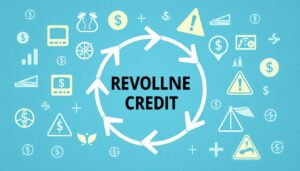Are student loans a necessary evil or a stepping stone to success in higher education? This question is pressing for many aspiring students. They face the challenge of financing their academic journey.
It’s important to understand the different types of student loans. This includes federal and private options. Knowing the differences helps in making informed decisions about educational expenses.
In this section, readers will learn about the importance of student loans. They will see how these loans can affect both immediate and long-term financial planning. We’ll discuss potential student loan forgiveness programs and various repayment options.
This comprehensive overview is a foundational guide for students and families. It also covers grants and scholarships as alternative funding solutions. These can complement student loans in the pursuit of education.
Understanding Student Loans and Their Purpose
Student loans help bridge the funding gap for higher education. They cover costs like tuition, room, and books. For many, a student loan makes getting a degree possible.
There are different types of student loans. Federal loans offer good rates and flexible payments. Private loans can be bigger but depend on credit. Knowing these options helps students choose wisely.
Student loans also raise ethical questions. The debt can affect a graduate’s future. It’s important to consider the debt’s impact on career and finances. Yet, a degree can open up new opportunities.
Federal vs. Private Student Loans
It’s important to know the difference between federal and private student loans. Federal loans offer fixed interest rates and flexible repayment plans. They also have income-driven plans and forgiveness programs. You can apply for these through the Free Application for Federal Student Aid (FAFSA).
Private loans, on the other hand, come from banks and credit unions. They might have more flexible terms but can have variable interest rates. This can make it harder to budget. Each lender has its own rules, based on your credit score and income.
| Aspect | Federal Student Loans | Private Student Loans |
|---|---|---|
| Interest Rates | Fixed | Fixed or Variable |
| Repayment Options | Income-Driven Plans Available | Varies by Lender |
| Forgiveness Programs | Available | Not Offered |
| Eligibility Requirements | Based on FAFSA | Based on Credit Worthiness |
Deciding between federal and private loans depends on your financial situation and future plans. Knowing the details of each can help you choose the right one for you.
How to Apply for a Student Loan
Applying for student loans can seem tough, but knowing the steps makes it easier. For federal loans, start with the Free Application for Federal Student Aid (FAFSA). This form checks if you qualify for federal aid like grants and loans. The FAFSA is available every October, so it’s important to meet deadlines.
When applying, you’ll need important documents like tax returns and income info. Make sure you have all your documents ready before starting the FAFSA. This helps avoid delays in getting your funding.
If you’re looking at private loans, research is crucial. Different lenders offer different rates, terms, and requirements. It’s important to compare to find the best loan for you. Private loan applications often ask for your credit history, income proof, and co-signer details if needed.
Knowing how to apply for student loans helps you tackle both federal and private loans. With good planning and attention to detail, getting the money you need for school becomes easier.
Understanding Interest Rates and Fees
It’s important to know about student loan interest rates and fees before borrowing. Interest rates can be fixed or variable. Fixed rates stay the same, making payments predictable. Variable rates can change with the market, possibly raising your costs over time.
Fees also add to the cost of student loans. For instance, origination fees are charged when you get the loan. These fees can make your loan more expensive, affecting how much you’ll pay back.
Knowing the effective interest rate is key. It includes the loan’s interest rate and any fees, showing the loan’s true cost. Using a student loan calculator can help estimate payments. It shows the total interest paid, helping you make smart financial choices.
| Type of Interest Rate | Example | Impact on Loan Costs |
|---|---|---|
| Fixed | 5.00% | Predictable payments throughout the loan term |
| Variable | 3.50% (initially) | Payments may increase depending on market rates |
| Origination Fees | 2.00% | Increases total loan amount, affecting effective rate |
| Late Payment Fees | $25 | Adds to overall loan costs if payments are missed |
Repayment Plans for Student Loans
Choosing the right student loan repayment options is key for managing debt. There are several plans for different financial situations. The standard plan has fixed payments over ten years, perfect for those who like stability.
The graduated plan starts with small payments that grow over time. It’s good for those expecting higher income soon. Income-driven plans cap payments based on income and family size, offering flexibility for those facing financial hurdles.
For those in public service, forgiveness programs can greatly reduce debt. The Public Service Loan Forgiveness (PSLF) program forgives debt after ten years of qualifying payments. Teacher Loan Forgiveness also helps educators in high-need schools, offering financial relief.
Understanding the different repayment plans and forgiveness options is crucial. Using available resources helps borrowers make informed choices. This way, they can manage their debt and explore forgiveness possibilities.
Managing Student Loan Debt
Managing student loan debt needs careful planning and smart financial management. Students and graduates can use effective debt management strategies. Making a budget is key, helping track expenses and ensure enough money for loan payments.
Loan consolidation is another good option for those with many loans. It combines loans into one, making payments easier. This can lead to a lower interest rate, but it’s important to weigh the pros and cons.
Refinancing is also worth looking into. It can lower interest rates if your credit score has improved. But, refinancing federal loans might mean losing some benefits. So, think carefully about your situation.
Using a mix of budgeting, understanding loan consolidation, and exploring refinancing can ease financial stress. Staying informed and taking action can make loan payments more manageable. This sets the stage for a better financial future.
| Strategy | Pros | Cons |
|---|---|---|
| Loan Consolidation | Simplifies payments, potentially lowers interest rate | May lose federal loan benefits |
| Refinancing | Possible lower interest rate, reduces overall payment amount | Can risk losing federal borrower benefits |
| Budgeting | Promotes financial awareness, ensures repayment readiness | Requires ongoing discipline and monitoring |
Impact of Student Loans on Credit Scores
Student loans have a big impact on credit scores and financial health. How well you manage your loans affects your creditworthiness. Key factors include payment history, credit utilization, and account age.
Making timely payments on student loans helps build a strong credit history. Payment history accounts for 35% of your credit score. Missing payments can hurt your score and limit future borrowing.
Credit utilization, linked to revolving credit, also affects student loans. Keeping a low debt-to-income ratio improves financial health. Even though student loans are installment loans, they count towards your total debt. Managing your loans well helps keep your score healthy.
The age of your student loan accounts also matters. A longer credit history can boost your creditworthiness. Keeping your loans in good standing over time strengthens your financial portfolio.
It’s important to be proactive with student loans. Create a budget, set up automatic payments, and talk to lenders if you’re struggling. These steps help protect your credit score while meeting your loan obligations.
Tips for Choosing the Right Loan
Choosing the right loan is important. It must fit your financial situation and educational goals. Look at interest rates closely, as they affect the loan’s total cost. Compare loans from federal and private lenders.
Consider the loan terms too. This includes repayment periods and fees. Flexible repayment plans can help manage costs during and after school. Think about your current finances and future income when choosing a loan.
Don’t forget to check the lender’s customer service. Good support can make your loan experience better. By considering all these factors, you can make a smart choice for your student loans.
The Role of Cosigners in Student Loans
Cosigners are key in the world of student loans, especially for private loans. Many students face financial hurdles because they don’t have much credit history. This is where a cosigner, like a parent, comes in handy. They agree to help with the loan, which can mean better terms and lower interest rates.
Having a cosigner can really help students get loans. Lenders see cosigners as a safer bet, so they’re more likely to say yes. This can give students a better financial start in college.
But being a cosigner is a big deal. If the main borrower can’t pay, the cosigner has to step in. This can be risky for both sides. So, it’s important for students and their cosigners to talk things over carefully before agreeing.
| Aspect | With Cosigner | Without Cosigner |
|---|---|---|
| Loan Approval Chances | Higher | Lower |
| Interest Rates | Lower | Potentially Higher |
| Financial Responsibility | Shared | Only Student |
| Impact on Credit Score | Both Parties | Only Student |
Future of Student Loan Policies in the U.S.
The U.S. is on the verge of big changes in student loan policies. Debates and legislative efforts are heating up. The goal is to make loans more affordable and accessible for students.
There’s a growing push for student loan forgiveness programs. These programs could help the economy grow by easing financial burdens.
Today’s economy shows we need new ways to finance education. Policymakers are looking at how to balance federal investment in education with borrowers’ financial responsibility. They’re considering changes like better repayment plans, income-driven solutions, and more scholarships.
Student debt’s impact on the economy is clear. The future of student loans is uncertain but promising. It’s crucial for everyone to stay updated on proposed changes. By doing so, we can better support students’ evolving needs.




